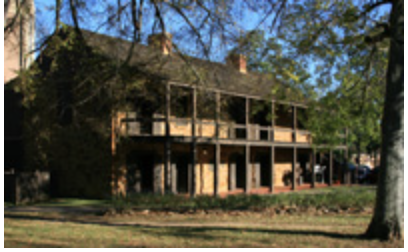1519
Spanish explorer Alonso Alvarez de Pineda maps the Texas coastline.
1528
Alvar Núñez Cabeza de Vaca and crew are shipwrecked near Galveston and begin exploration.
1541
Francisco Vázquez de Coronado crosses part of the Texas Panhandle in search of Gran Quivira.
1598
April 30 - A ceremony of thanksgiving is held near present-day El Paso by Juan de Oñate, the members of his expedition and natives of the region. The Spaniards provide game and the Indians supply fish for a feast, Franciscan missionaries celebrate mass, and Oñate claims all land drained by the Rio Grande in the name of the King Philip II of Spain.
1629
At the invitation of a delegation of Jumano Indians, two Spanish missionaries from New Mexico travel to the vicinity of present-day San Angelo to instruct the Jumanos about Christianity. Their several-day visit is followed by a second, six-month, mission in 1632.
1680
Spanish and allied Indians fleeing the Santa Fe Uprising arrive near present-day El Paso. Three missions, Corpus Christi de la Isleta (Ysleta), Nuestra Señora da la Limpia Concepción del Socorro, and San Antonio de Senecú are begun.
1685
French explorer Rene-Robert Cavelier, Sieur de La Salle, looking for the mouth of the Mississippi River, lands in Texas by mistake. He establishes a colony, Fort St. Louis, on Garcitas Creek in present-day Victoria County. La Salle is killed by several of his own men at an unknown East Texas location on March 19, 1687. By January 1688, the colonists that haven't already been felled by Indians, disease, poisonous snakes and malnutrition are finished off by Karankawa Indians.
1689
April 2 – Spanish Gen. Alonso de León's expedition finds the remains of Fort St. Louis. Fearing French intentions to lay claim to Spanish territory, the Spanish begin establishing missions and settlements in East Texas.
1690
May – Construction begins on the first East Texas mission, San Francisco de los Tejas, near present-day Weches, Houston County. The mission is closed in 1693.
1716
Spanish build a presidio, Nuestra Señora de los Dolores de los Tejas, to protect the East Texas missions.
1718
May 1 – The San Antonio de Valero mission, of which the building known as the Alamo was the chapel, is founded in San Antonio.
1720
February – San José y San Miguel de Aguayo mission is founded near San Antonio de Valero.
1731
Three East Texas missions are moved to San Antonio because of economic troubles. Their new names are Nuestra Señora de la Purisima Concepción de Acuna, San Francisco de la Espada and San Juan Capistrano.
1731
March 7 – Fifty-five Canary Islanders arrive in San Antonio to establish a civilian settlement, San Fernando de Béxar.
1731
Aug. 1 – In the first election held in Texas, voters choose officials of the municipal government of San Fernando.
1745
The missions at San Antonio are producing several thousand pounds of cotton annually.
1758
March 16 – Santa Cruz de San Sabá mission near present-day Menard is destroyed and eight residents are killed by Comanches and their allies. In August of the following year, Spanish troops on a retaliatory raid are defeated by Indian residents of a large encampment at Spanish Fort in present-day Montague County.
1766
Sept. 4 – Texas' first recorded hurricane strikes near Galveston.
1779
A group of settlers led by Antonio Gil Ybarbo (sometimes spelled Ibarvo or Y'barvo) establishes a civilian community near an abandoned mission site; the new town is called Nacogdoches.
1810
Sept. 16 – Father Miguel Hidalgo y Costillo and several hundred of his parishioners seize the prison at Dolores, Mexico, beginning Mexico's struggle for independence from Spain.
1813
Texas' first newspaper, Gaceta de Texas, is founded by José Alvarez de Toledo in Nacogdoches.
Aug. 18 – In the bloodiest battle ever fought on Texas soil, the Battle of Medina, a Spanish royalist force defeated a republican force fighting for Mexican independence. There were some 1,300 soldiers killed or executed in the battle, which occurred about 20 miles south of San Antonio.
Dec. 26 – The Spanish government grants Moses Austin permission to establish a colony of Anglo-Americans in the Texas area. When he dies the following June, his son, Stephen F. Austin, receives authority to continue the colonizing effort.
1821
Aug. 24 – Mexico gains independence from Spain.
1823
Jan. 3 – After a period of governmental confusion following independence, Mexican officials approve Austin's plan to bring three hundred families into his colony. This group becomes known as the "Old Three Hundred."
|



